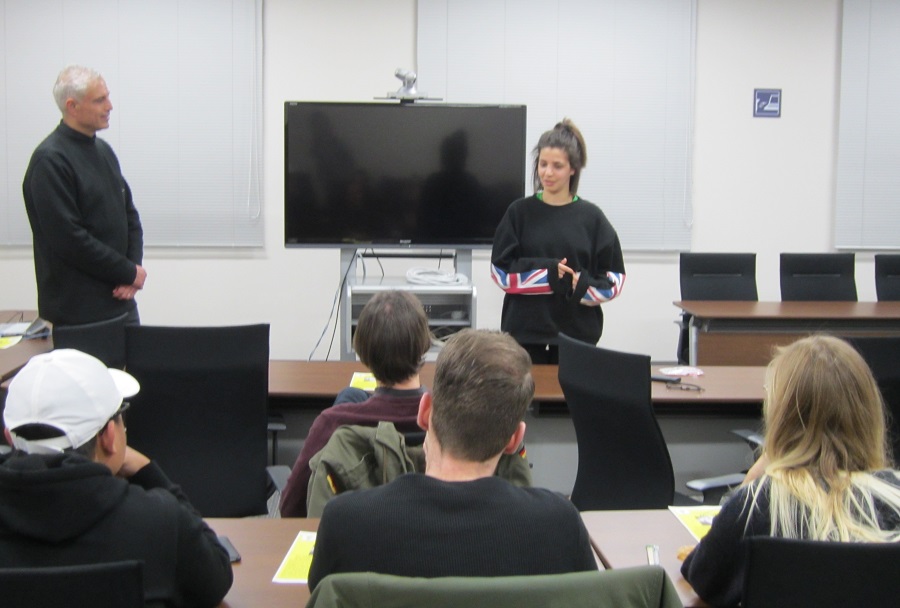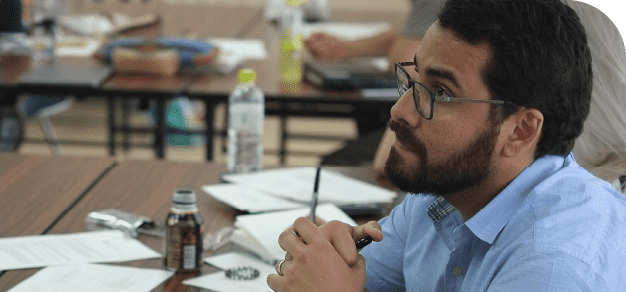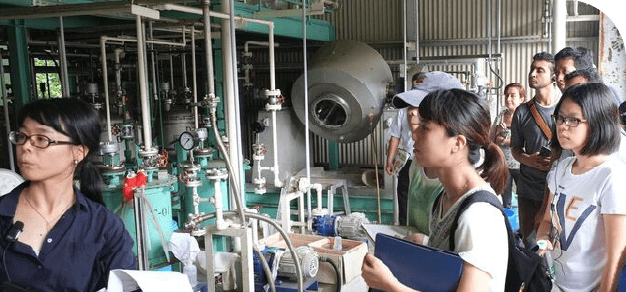Recent Activities
最新の活動
GRM Monthly Documentary Film Event - February
2019/02/14
A documentary film event was held on Thursday, 14 February 2019.
We watched a film, titled
“The Wanted 18”
----------------------------
Date: Thursday, 14 February 2019
Time: 17:30 P.M. - 19:30 P.M
Venue: Meeting Room, Shikokan Building, Karasuma Campus
----------------------------
■Commentary
Written by Iyas Salim
Living a life under a military occupation is not only about a struggle for freedom but also about surviving the daily living from control and oppression. The story of the documentary film, The Wanted 18, illustrates what it is like to live under military occupation. The small Palestinian town of Beit Sahour is the main site where the story is taking place, located in the West Bank, near the town Bethlehem and has been under Israeli military occupation since 1967. For more than five decades, four and a half million Palestinians of West Bank and Gaza-Strip are living under Israeli military occupation. It means living under oppressive conditions and military rules where human freedom and human rights are denied or absent. Economically, the Palestinian population represent a captive market to Israel. Economic activities such as import, export or manufacturing are heavily affected by the occupation regime and restrictions. The local community of Beit Sahour thought of establishing an independent milk-production project in a bid to stop buying milk and dairy product from Israel.
The people of Beit Sahour decided to buy 18 cows in the hope of producing community ‘own dairy. The entire community welcomed the idea as it saw an opportunity, even a small one, to produce milk, without relying on Israeli dairy companies. Once the project took off, the community realized the enterprise was bringing some fruit. But, to military occupation authorities, the community action meant a direct challenge to the occupation status quoi. The Israeli military pursued the 18 cows. The authorities announced that those 18 cows represented “a threat to the national security of the state of Israel.” Local famers decided to go underground in producing milk despite the continuing pursuit of Israeli military. Eventually, the military authorities decided to arrest the cows. For the people in Beit Sahour, the collective farm and the cows became a symbol of popular resistance against the occupation. And the cows became local celebrities.
The film events took place during the first Intifada, Uprising, between 1987 and 1993. It was a popular Palestinian uprising against Israeli military occupation. Israeli military forced schools and universities to close down repeatedly throughout the first Intifada. Local communities and civil society organizations embarked on self-reliance strategy in response. School lessons were taught in make-shift tents in many parts of the Gaza Strip and West Bank. Temporary class rooms were conducted in private homes and mosques. Repeated closure by military orders took place during the time of Intifada. One participant from the film explained how communities across the West Bank and Gaza Strip began gradual economic and social movement towards self-reliance and resisting the occupation at popular level. For Israel realizing the momentum of the poplar Intifada taking place at grass-root level, it opted for the Oslo Accord of 1993. It was signed, however, without any commitment towards a clear path for a Palestinian independence or statehood. And with the absence of a Palestinian state, the military occupation and the suffering of the Palestinian people are still continuing to this day.
In the discussion following the film, one Palestinian student participated in the event and the discussion. Coming from the same town of Beit Sahour, the student recognized most of persons who appeared in the film. One of her high school teachers featured in the film often as an activist who advocated and worked for the project of an independent dairy farm. This added a more realistic dimension to the discussion. The student described the town of Beit Sahour and the people who appeared in the film. Beit-Sahour is predominantly a Christian town with a 10% Muslim population, living side by side for more than a millennium. The entire people of Beit Sahour took part in the intifada as a popular uprising against a foreign military rule.
Today, both the West Bank and the Gaza Strip are continuing living under military occupation. Israeli settlement are built illegally on Palestinian land. There are more than 500 military check points in the West Bank separating Palestinian cities and villages from each other. What would normally take half-hour car drive within the West Bank, now it takes few hours as military check points are set up along the roads connecting cities and communities. In the Gaza Strip, a narrow coastal area of 2 million Palestinians, it is completely sealed off from the outside world. Israeli navy patrols the beaches of Gaza, preventing sea access and fishermen from going fishing beyond 3 nautical miles. An 8-meter wall is erected on the northern part of Gaza Strip. And along the 47-KM long eastern perimeter, an electronic fence with heavy military presence was built. Gaza`s Palestinians birth registry is controlled by Israel. Gaza has become known as the world`s largest open-air prison. Every Friday, since March 2018, the people of Gaza, who are mostly descendant of refugees, demonstrate along Gaza`s eastern fence protesting the siege and military occupation. Without Palestinian freedom from military occupation and human dignity, violations against the Palestinian population will continue, continuing to generate violence, oppression and instability in the region.
(Reported by Dr. Iyas Salim, Institute for Advanced Research and Education, Doshisha University)




